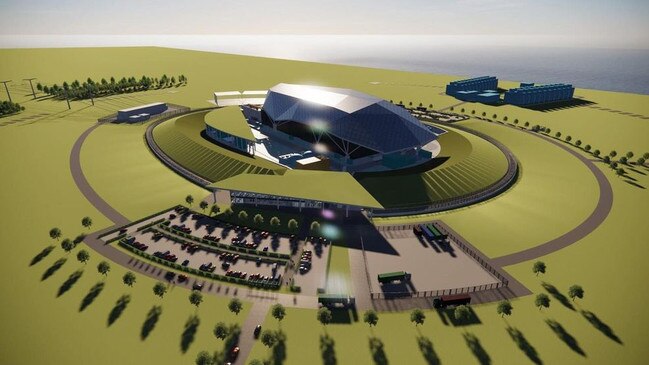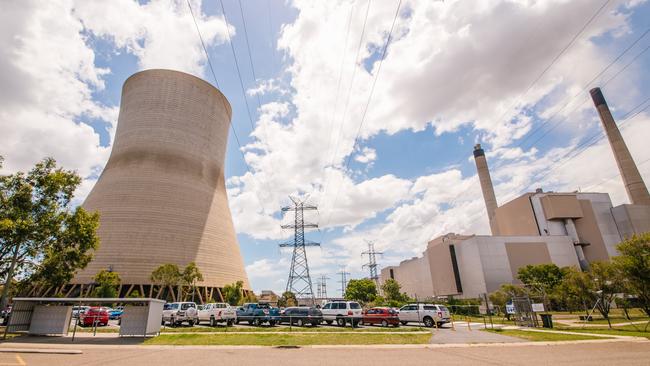Nuclear power plants in Queensland: Expert answers the most asked questions
We’ve gone to an expert to answer all your questions on nuclear power after Peter Dutton pledged to build seven plants across Australia, including two in Queensland.
QLD Politics
Don't miss out on the headlines from QLD Politics. Followed categories will be added to My News.
Federal Opposition leader Peter Dutton has pledged to build seven nuclear power plants across Australia, including two in Queensland.
As part of the Coalition’s energy plan, plants would located in Callide near Gladstone and Tarong in the South Burnett.
The proposal has raised a lot of questions among Courier-Mail readers.
We went to an expert in the field, Griffith University lecturer in Applied Maths and Physics Dr Nathan Garland, for answers.
Is nuclear energy dangerous?
Dr Garland said he understood there were concerns about the safety of nuclear power considering a number of high-profile accidents, most notably the Chernobyl explosion in 1986 and the partial meltdown of Fukushima in 2011.
However, Dr Garland said advancements in engineering, safety and risk analysis meant that nuclear energy wasn’t dangerous.
“That’s obviously a good question, and people have those concerns,” he said.
“But right now, that’s probably not my biggest concern in terms of, is it dangerous if I’m living near it, or if it’s down the road, I would say no from that perspective.”

Is it reliable?
Dr Garland said nuclear energy was more reliable as an energy provider because it did not require as much intervention and maintenance as traditional fossil fuel generators.
“Generally in the sense of being a good electricity provider, it is,” he said.
“I guess that’s why the Coalition are kind of chasing it in terms of replacing things like coal and gas base load power.”
“Things like coal, gas, sometimes they do require a lot of maintenance,
“As they get older, there’s just a lot of things that can go wrong with those traditional types of fossil fuel.”
Would electricity be cheaper under nuclear power?
Dr Garland said it was too hard to say whether power bills would be cheaper at this point.
“I think, if anyone earnestly says that, then I just wouldn’t really believe them,” he said.
“It’s unknown at this point.”
He said you would have to factor in the cost to build into working out power prices down the road, which could be many years down the track.
How much does it cost to build?
The CSIRO’s GenCost report has estimated the capital cost of a large nuclear plant would be $8655 per kilowatt, equating to about $8.6 billion for a one-gigawatt reactor.
“The CSIRO report estimated it would be at least, 50 per cent more expensive [than a traditional power generator], which probably sounds about right, anywhere that has built these things, they do require a lot of money to start up,” Dr Garland said.
“Especially if you’re starting from zero, like Australia would be, that always requires a lot more financial investment than if you have already done it before.
“If we’re going to put half a dozen of these around the country, each one would cost X dollars.
“The first couple that they build are going to be at least twice that, in the sense of, because it’s the first time that you’re doing something.”
Dr Garland said the initial upfront costs would be larger than any option currently on the table.

What would change for me if I’m living near a nuclear reactor?
Dr Garland said not much should change for people living near a nuclear reactor.
“In Europe, plenty of people are living near these. Places like Canada have been doing that quite successfully,” he said.
“So I wouldn’t, worry about that if overnight one magically appeared in my suburb.”
Dr Garland said the main concern would be where the medium- to long-term waste went.
“They haven’t really addressed that in great detail, in the sense of, if there’s half a dozen nuclear power plants,” he said.
“When you do have to eventually remove parts and replace the fuel for the nuclear fuel that goes in over time, gradually the radioactive matter, just slowly depletes, and then at some point it isn’t useful anymore.
“And then you have to put it somewhere, but it’s still quite radioactive.”
Dr Garland said a lot of people had tried to address the issue but there had not yet been a solution.
Why doesn’t Australia already have nuclear energy?
Dr Garland said the main reason would be because Australia hadn’t needed it because its population is smaller and less dense.
“We’re quite lucky to be able to use different types of energy. So, coal and gas, and, more recently, renewables, which being able to have less dense cities helps the renewable case,” he said.
“Because you can just build more of them, since we do have the space.
“Australia just doesn’t really have the human capital to do the nuclear thing yet, in the sense of people that are trained and able to work in this field.”



